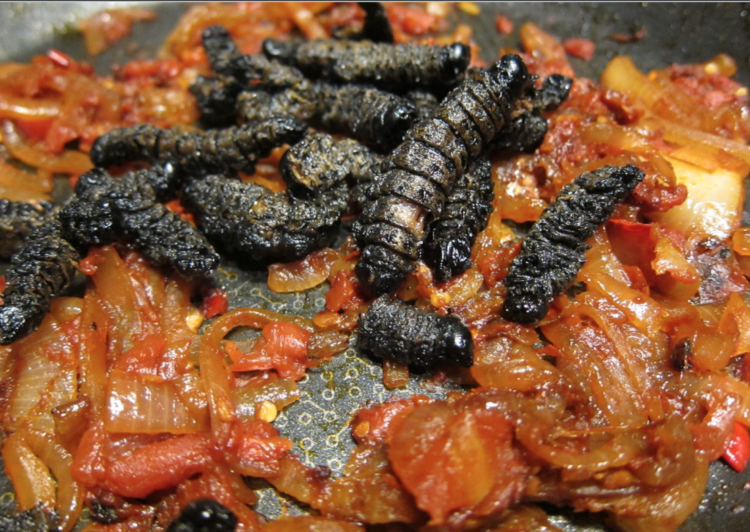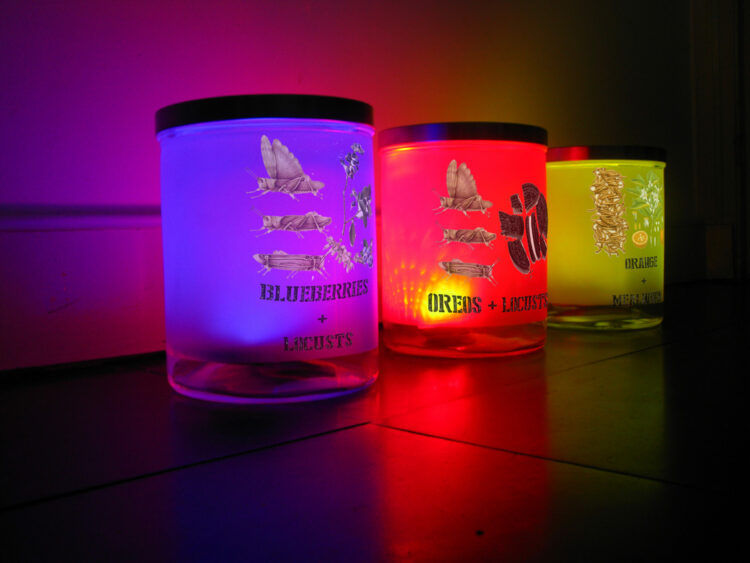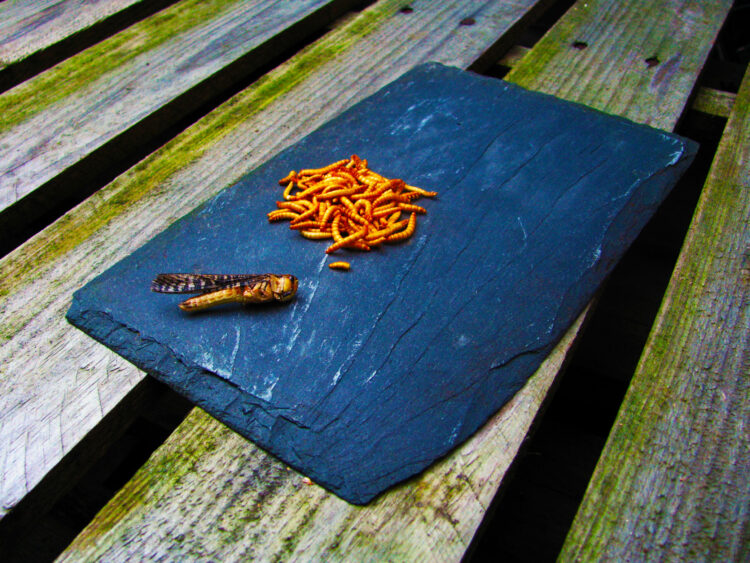Overcoming barriers: Eating insects
Project by Marco Ortiz
Supervised by Rick Schifferstein, Erik Jepma, and Michael Bom Frost
Meat production requires substantial quantities of nonrenewable fossil fuels for breeding, rearing, slaughtering, and transporting the animals, while simultaneously occupying farmer’s land, polluting water, and contributing to greenhouse emissions (Pimentel & Pimentel, 2003). With the growing world population and the increase in income in developing countries, the demand for animal products is expected to increase. As a consequence, there is a need to find new protein sources as meat alternatives (Verkerk, Tramper, van Trijp, & Martens, 2007). This sustainable alternative could be insects, because the conversion from plant to insect protein is highly efficient compared to livestock, while needing less land and producing less CO2 (DeFoliart, 1999; van Huis et al., 2013).
According to the Food and Agriculture Organization, there are more than 1900 species of edible insects in the world (Durst, Johnson, Leslie, & Shono, 2010). Insects can be consumed at multiple stages of their development: eggs, larvae, pupae, and adults having different properties at each stage (Verkerk et al., 2007). Although their nutritional value varies between species, on average their protein content amounts to 40 g to 75g for every 100 g of dried insect meat, making insects comparable to beef meat in terms of protein content (Ramos-Elorduy et al., 1997).

However, a major challenge is that many people in Western countries experience feelings of disgust, aversion, or distaste towards insects in general and as food in particular, since they are not familiar with such ingredients (Deroy, Reade, & Spence, 2015). The fact that people experience these negative emotions hinders a greater acceptance of insects as an edible product. The objective of this project was to design a product, service, or ritual that would assist in changing the meaning of insects for Western consumers, to eventually persuade people to start eating insects. Overall, the goal of the concept is to provide a new eating experience by coupling the negative emotions that are typically experienced with insects, such as disgust and frustration, with positive ones, such as trust, curiosity, fascination and inspiration (Ortiz, 2014).
The final concept is called The Hive Restaurant. One of the exceptional elements in this restaurant are the seemingly endless shelves with lit-up jars with insects. The colored LEDs that illuminate the jars create a feeling of modernism and slight surrealism, as the insects cast their shadow onto the surface of the jars, creating a silhouette that makes guests feel slightly uncomfortable as the insects crawl around. The jars’ colors represent different flavors that insects acquire depending on the feed they eat. Furthermore, all Insect foods are served on stones, that can either be flagstones or slates. This makes the eating interaction more playful and thrilling and it diverts people’s attention away from the insect. Receiving the insects on a stone makes the serving more natural, but also more confrontational by reminding customers of the insects’ natural habitat.


References
DeFoliart, G. R. (1999). Insects as food: why the western attitude is important. Annual review of entomology, 44, 21-50.
Deroy, O., Reade, B., & Spence, C. (2015). The insectivore’s dilemma, and how to take the West out of it. Food Quality and Preference, 44, 44-55.
Durst, P. B., Johnson, D. V., Leslie, R. N., & Shono, K. (Eds.). (2010). Forest insects as food: humans bite back. Proceedings of a workshop on Asia-Pacific resources and their potential for development. Bangkok, Thailand: FAO.
Ortiz, M. A. (2014). Welcoming insects at the table: Designing a new experience of eating insects. (Master Thesis). Delft University of Technology, Delft.
Pimentel, M., & Pimentel, D. (2003). Sustainability of meat-based and plant-based diets and the environment. The American Journal of Clinical Nutrition, 78(3), 660S-663S.
Ramos-Elorduy, J., Moreno, J. M. P., Prado, E. E., Perez, M. A., Otero, J. L., & de Guevara, O. L. (1997). Nutritional value of edible insects from the state of Oaxaca, Mexico. Journal of Food Composition and Analysis, 10(2), 142-157.
van Huis, A., van Itterbeeck, J., Klunder, H., Mertens, E., Halloran, A., Muir, G., & Vantomme, P. (2013). Edible insects: future prospects fo food and feed security (Vol. 171). Rome: FAO.
Verkerk, M. C., Tramper, J., van Trijp, J. C. M., & Martens, D. E. (2007). Insect cells for human food. Biotechnology Advances, 25(2), 198-202.
Want to read more about this project?
Download Marco’s report.